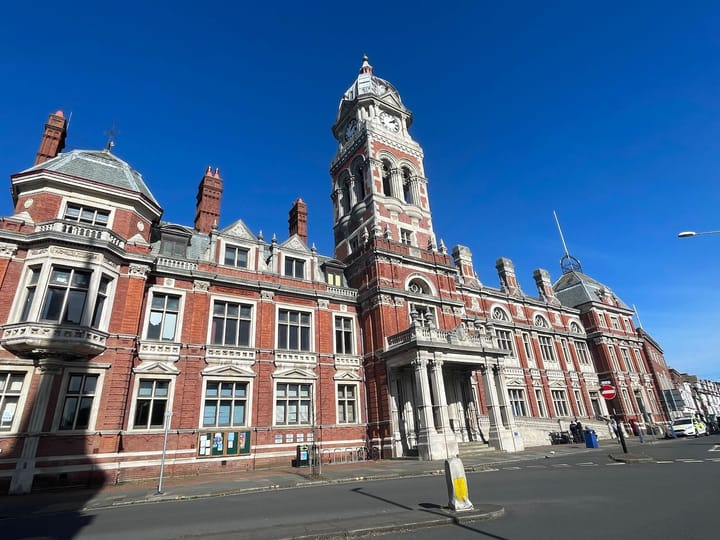Hope for the survival of elegant elm trees
It is estimated there are fewer than 1,000 mature English elms left after millions were wiped out by Dutch Elm Disease. Many are in East Sussex where there is a concerted effort to save the trees left and to find disease-resistant varieties
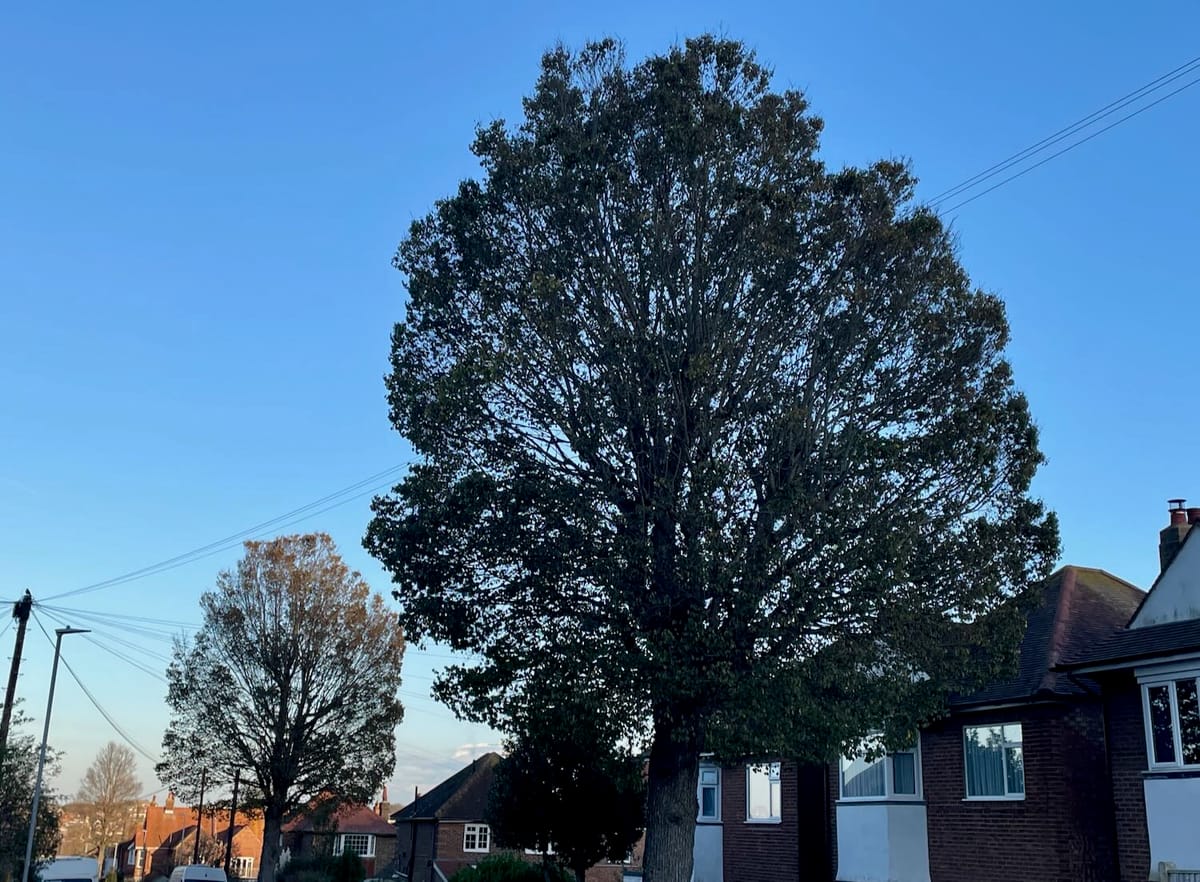
Towering elm trees, features of English landscape for centuries, were almost wiped out as Dutch Elm Disease took hold 50 years ago and killed 90% of them – some 25 million trees.
Some estimates suggest there are fewer than 1,000 mature English elms left. Many are in East Sussex where there is a concerted effort to save those left and to plant disease-resistant varieties
By Robert McGowan
On an elegant Edwardian avenue, late summer light filters through a canopy of leaves, casting shifting dappled shade.
At first glance this is not particularly noteworthy, but a closer look at this tall street tree, with serrated-edge dark green leaves, reveals something interesting and unusual.
This is an elm, an iconic species that once stood sentinel across Britain’s landscape, with their straight, slender trunks and billowing, thundercloud-like canopies immortalised by countless artists and poets.
In folklore, elms often had a sinister reputation associated with death, partly because of their habit of suddenly shedding branches.
For centuries they were prized for their toughness and beautiful swirling grain. Regarded as second only to oak, elm was fashioned into flooring and furniture, cartwheels, tools and coffins.
Elm wood holds its shape and strength when waterlogged, so was often used in ships’ keels, lock gates, water wheels and pipes. Elms are also renowned for the ecosystems they support: some 80 species of invertebrate, notably the white-letter hairstreak butterfly and myriad moths. They also harbour unusual mosses and lichens.
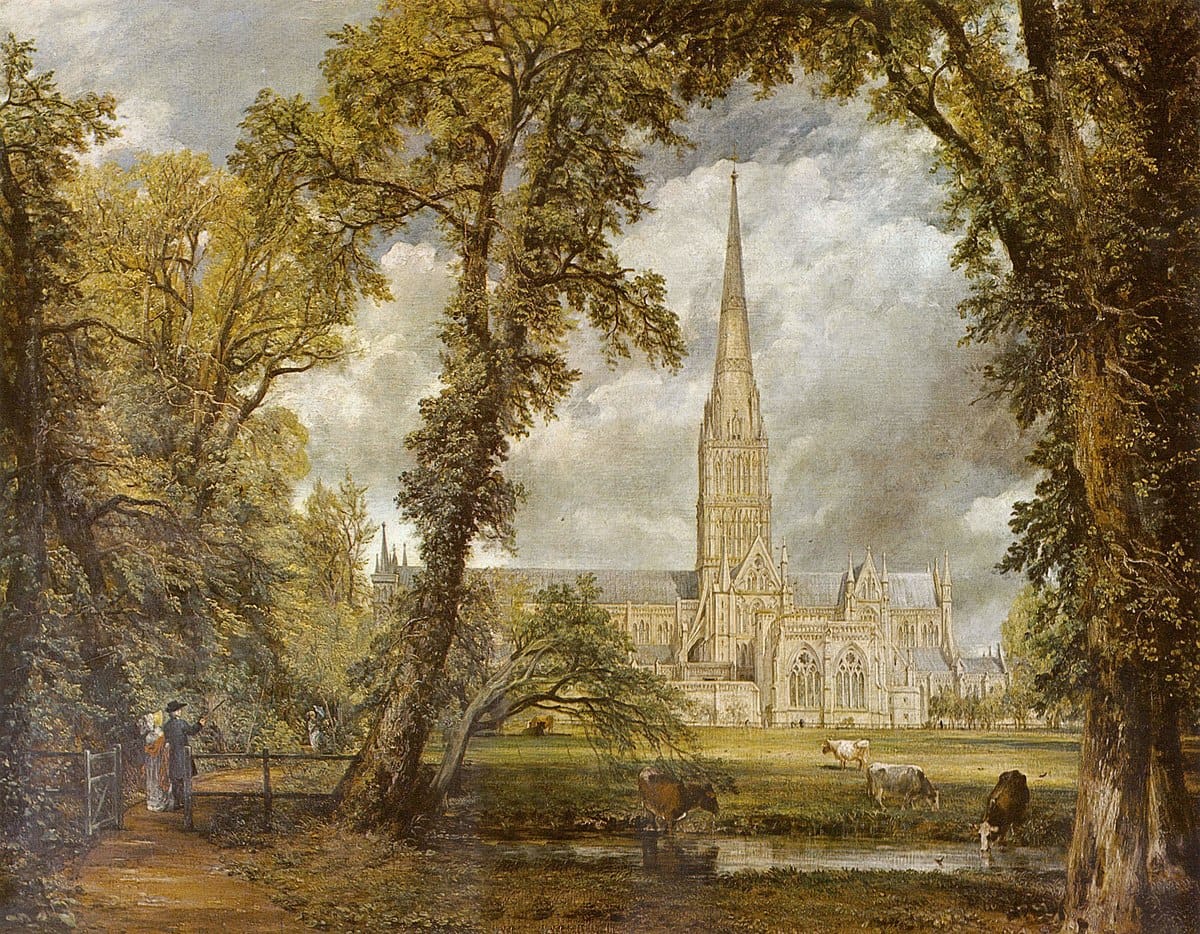
But the elms that framed Salisbury cathedral in John Constable’s famous landscape are long gone, wiped out by waves of Dutch Elm Disease. By the late 1970s around 25 million trees, more than 90% of the elms in the UK, had perished and the species largely slipped from the collective memory.
But not entirely – the elm clung on, unheralded, in a few areas.
Parts of East Sussex remained a stronghold: a slice of coast and countryside between Brighton and Pevensey along with Lewes, Seaford and Eastbourne.
Mapping the elm across Sussex
Anthony Becvar, tree health officer at East Sussex County Council, says the combination of sea breezes and the largely treeless South Downs may have created an environment in which the elm bark beetle, which spreads the disease, could not flourish.
A large part of Becvar’s job since 2011 has been to protect the remaining elms, which are now of global significance.
During that first winter, he and colleagues walked for miles along footpaths and byways, criss-crossing a “control zone” in search of elms and plotting them on a map. They counted about 14,000 “semi-mature to over-mature elm” in the zone.
Since then, however, Dutch Elm Disease has returned with a vengeance. It has entered from the north, Becvar thinks, moving along the Ouse and Cuckmere valleys, facilitated perhaps by unusually warm springs and summers.

Becvar says the elms haven’t been re-mapped and he’s reluctant to estimate how many soaring mature ones remain in the zone. It’s clear, however, that many fine specimens have succumbed to disease in recent years and been felled.
Some estimates suggest there are fewer than 1,000 mature English elms left. He points out that hundreds of healthy elms have been found on areas of private land, and that thousands of young elms survive in hedgerows, although they often become infected after about ten years.
What is Dutch Elm Disease?
First recognised in France after the First World War, Dutch Elm Disease reached England in 1927 and swiftly killed thousands of elm trees.
The microscopic fungus blocks a tree’s vascular system, causing leaves to wither, branches to wilt and usually death within a year. It is spread by tiny (3mm) elm bark beetles, Scolytus scolytus, which burrow beneath the bark of newly-deceased elms to lay eggs – and in so doing gather fungus spores. Emerging in spring, the young beetles fly to nearby healthy elms to feed, infecting them.
The original epidemic mysteriously declined in the 1930s but a second one took off in 1967, emerging from shipments of rock elm from Canada. This time, elm bark beetles carried a far more virulent strain of the fungus and within a decade around 90% of the distinctive English elm (Ulmus procera) – some 25 million trees – had perished.
How are affected trees identified?
Diseased elms reveal themselves in late spring, when new leaves appear brownish and curled, often at the crown. Initially Becvar’s team would fell diseased trees “as soon as they were spotted so that they didn’t decline and become viable breeding grounds”.
But with greatly reduced budgets – a situation made worse since 2012 by ash-dieback – the county council has prioritised felling those they considered ideal for beetles to breed.
“As the disease is endemic,” Becvar says, “we are never likely to eradicate it. However, my main task is to ensure a population of healthy elm continues within the control zone.
“By removing trees suitable for breeding beetles, we hope their population diminishes enough to allow regrowth to a point where there will always be a healthy mature population. I am optimistic that this is possible if enough time and money is spent seeking out disease trees and removing them in a timely fashion.”
What happens to infected trees?
The rasp of chainsaw, shouted commands, the grind and death-rattle of woodchips clattering into a trailer’s housing. This has become a familiar scene across Eastbourne in recent years, as tree surgeons battle with the fallout from two microscopic fungi: Ceratocystis ulmi, cause of Dutch Elm Disease, and Chalara fraxinea, whose wind-borne spores have killed swathes of ash woodland at the edge of town and beyond.
Victorian town planners favoured elms in seaside resorts like Eastbourne, Seaford and Brighton as they thrive on the chalky, alkaline soils and are known to be tolerant of salt-laden air.
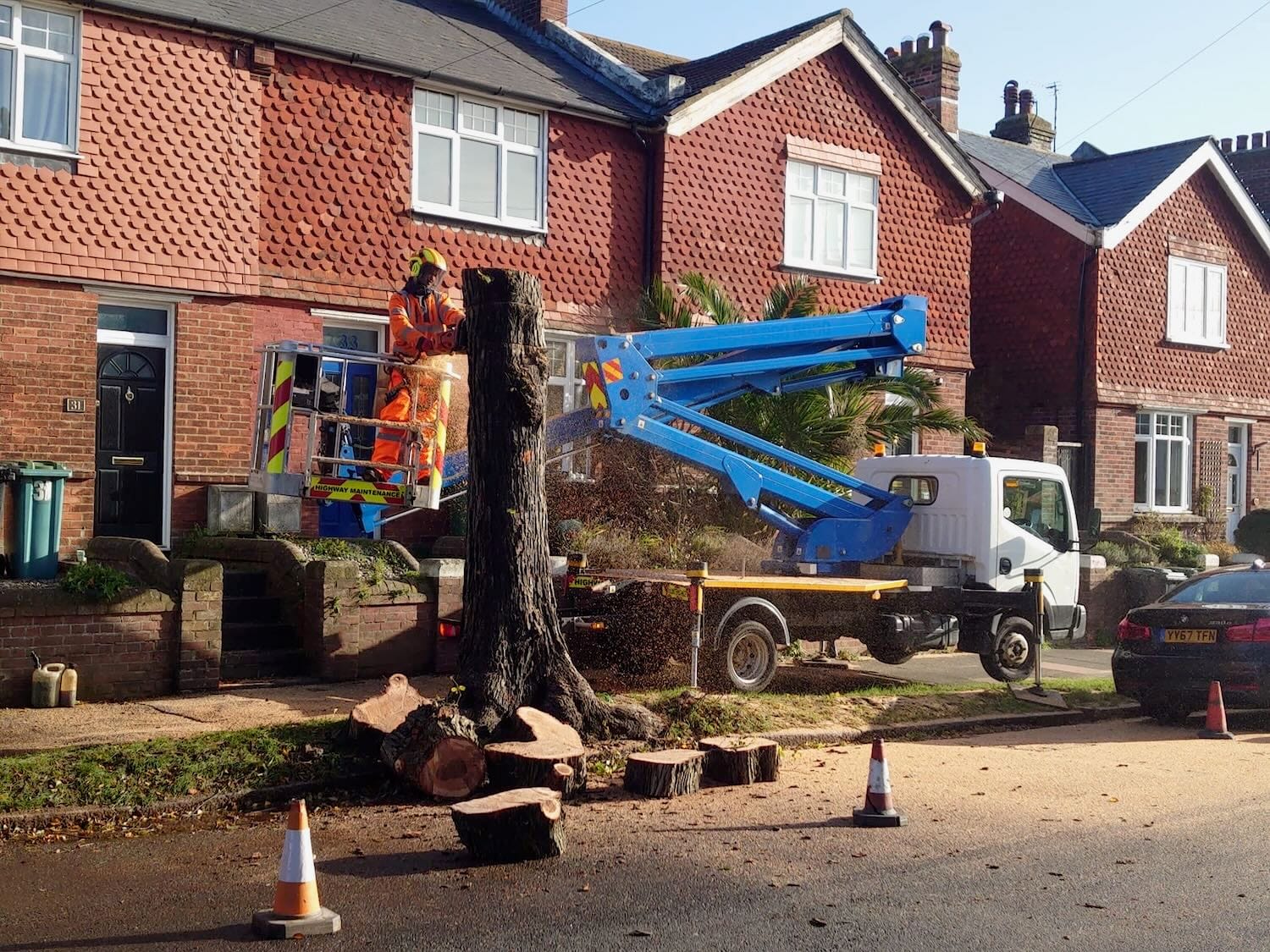
Mark Pullen is Neighbourhood First specialist in arboriculture at Lewes and Eastbourne Councils, with 30 years’ experience in the industry and a special interest in the disease.
He says that large numbers of English elm (Ulmus procera), Wych elm (Ulmus glabra) and Wheatley elm (Ulmus minor ‘Sarniensis’) were planted in the Eastbourne area – and argues that their survival reflects decades of co-ordinated management through the Dutch Elm Disease control programme, which began in the 1970s and continues in 2025.
He explains: “This involves the prompt felling of infected trees, safe disposal of infected material, root severance, regular aerial and ground surveys to detect early symptoms and restrictions on the movement of elm timber.”
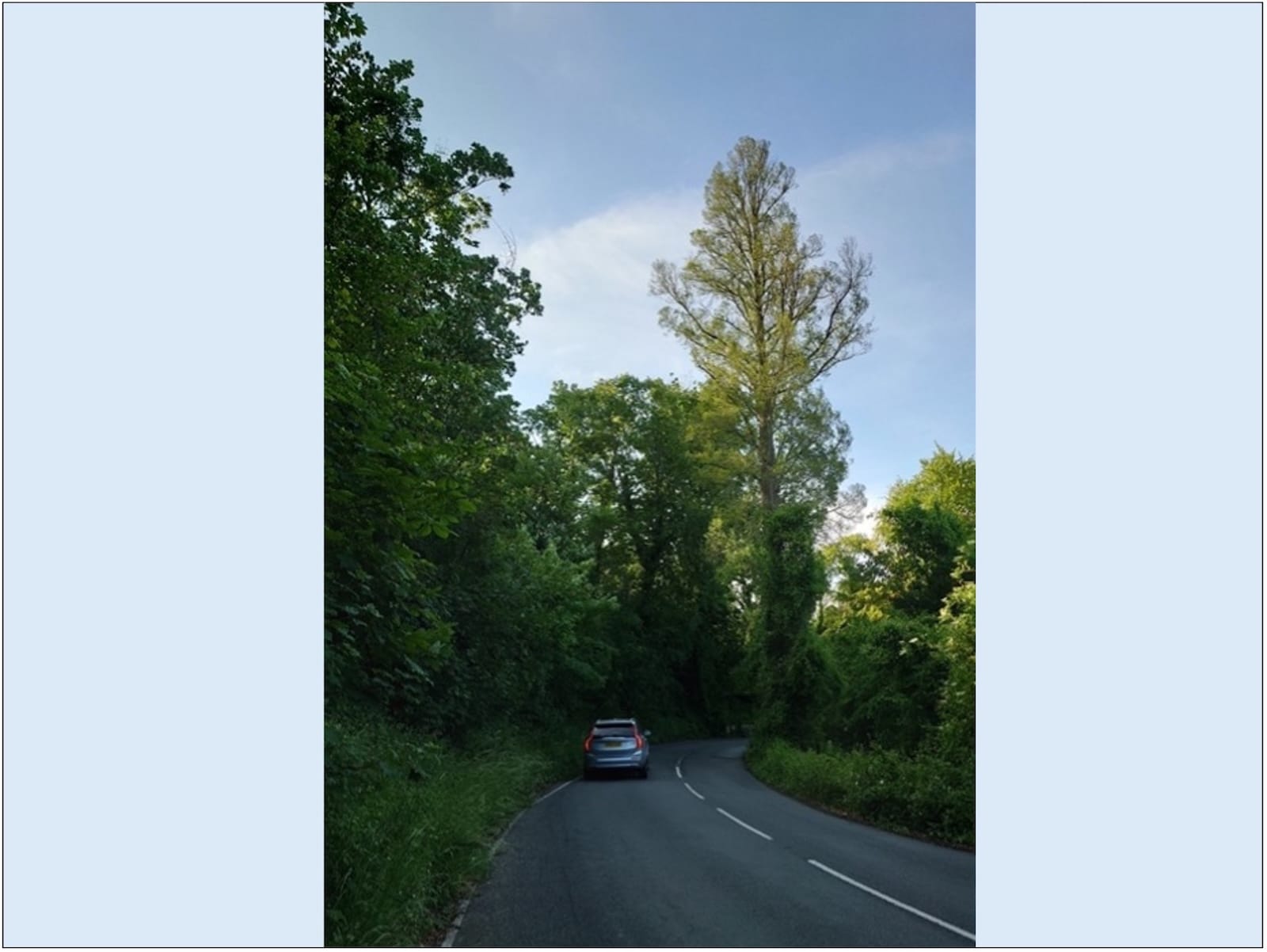
Mature elms still line the broad streets of Meads and parts of Old Town. A candidate for the UK’s tallest remaining elm looms over Paradise Drive near the Royal Eastbourne Golf Club course. But they are on borrowed time.
“The 2025 season has been particularly challenging,” says Pullen. “Prolonged periods of hot, dry weather have accelerated elm bark beetle activity and placed trees under significant drought stress. These conditions hastened the progression of infection and reduced the time available for officers to identify new cases and undertake aerial pruning before systemic infection occurred.”
Diseased elms are daubed with ominous orange crosses, then disrobed – boughs and branches sliced off and de-barked. For a while, a towering bark will remain at the roadside, before being sliced again, leaving a stump – scored vertically and ‘girdled’, with conducting tissues severed to prevent the fungus reaching the root system which can join with adjacent trees.
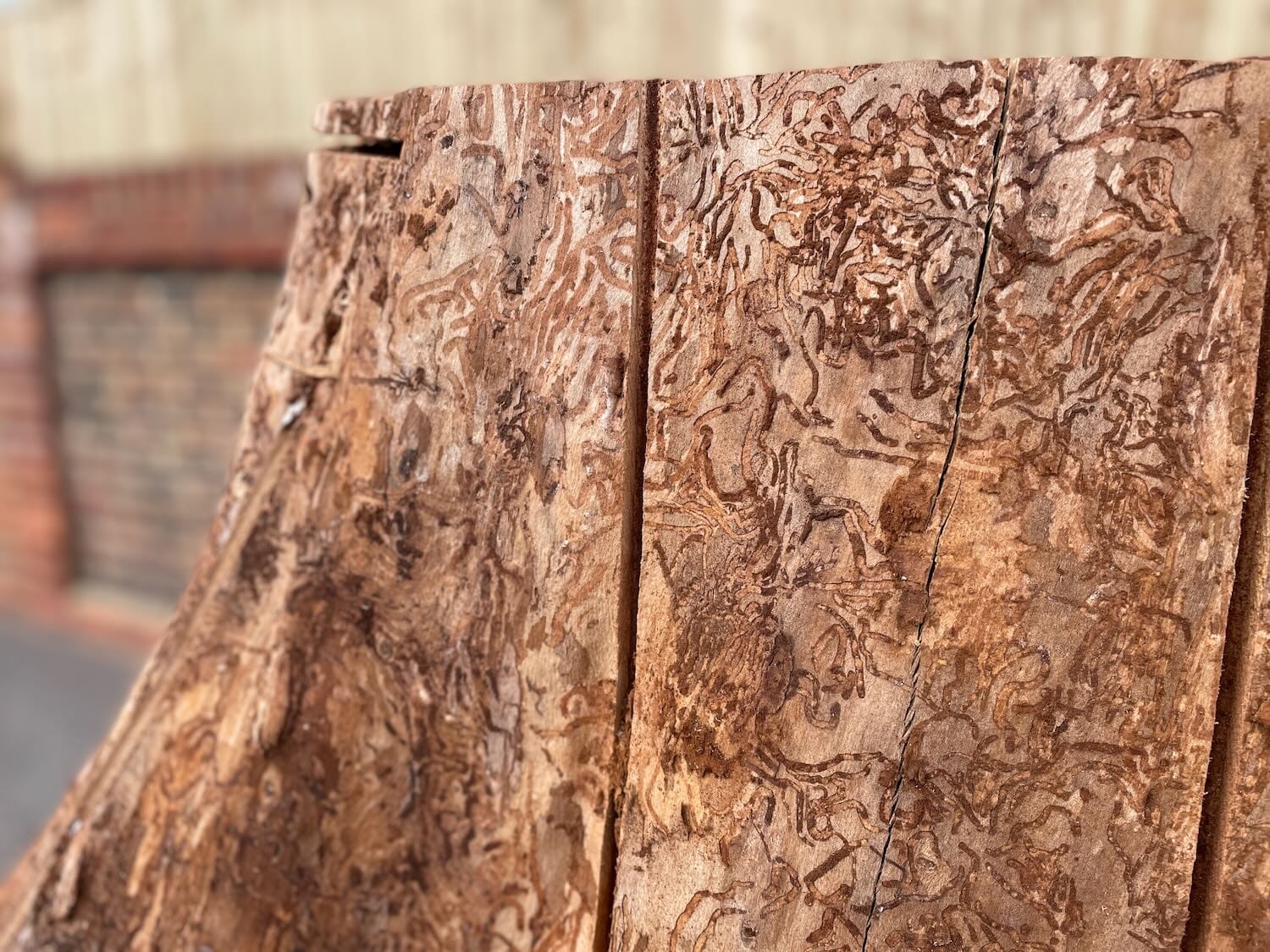
The cost of removing them is apparently higher than the cost of cutting down the bulk of the infected tree. In places, locals have placed flower baskets atop the stumps.
In Brighton, which has long taken pride in its 17,000 elms and a strictly enforced “cordon sanitaire” since the 1970s, the local authority is also dealing with a resurgence of Dutch Elm Disease. The death in 2019 of one of the famous year-old ‘Preston Twins’ that graced the city’s Preston Park for more than 400 years was mourned by many.
Green shoots of hope
But all is not lost. Brighton & Hove Council has been deploying the ‘Dutch Trig’ inoculation system, which can provide temporary protection although it must be reapplied annually and is costly at scale. When 50 elms had to be felled at Coldean Woods in summer 2021, they were swiftly replaced with new disease-resistant varieties.
Efforts have been under way to propagate disease-resistant hybrids for many years. Most hybrid cultivars have Asiatic ancestors – such as the Himalayan elm – that are naturally resistant. But environmental conditions in Asia are often very different from those in southern England.
Butterfly conservation specialist Adam Brookes has taken on the painstaking task of testing which hybrids would prove resistant and thrive in English conditions by growing them at five sites near Portsmouth.
He was especially keen to discover which cultivars would prove a viable habitat for the rare white-letter hairstreak butterfly. It’s a slow process, he says, “with occasional advances but also tragedies and setbacks”.
Dutch/French hybrid elm ‘Lutece’, now propagated in the UK, ticks many boxes: disease resistance, insect habitat, tolerance of waterlogging and drought and resemblance to the native elm.

Brookes is also enthused by ‘Ademuz’, derived from a highly resistant natural European elm recently discovered in Spain. But he points out it has become almost impossible to acquire because of import regulations linked to attempts to prevent the spread of the destructive bacterial disease Xylella fastidiosa, which affects various species, including olive trees.
An autumnal breeze funnels along College Road opposite Towner Eastbourne, rustling the remaining leaves on a row of tall, slender saplings. They are a hybrid elm known as ‘New Horizon’. Mark Pullen says they are showing strong resilience to the disease and are establishing well.
This variety has also been planted in significant numbers by Treebourne in both urban and rural settings.
How to get involved
Pullen adds that public involvement in street tree planting is always welcome. Requests for new street tree planting can be made to Treebourne (for Eastbourne Borough Council). Each is assessed taking into account the site, available budget and long-term management considerations.
Could these trembling saplings mark the beginning of a resurgence of elms in East Sussex – and potentially well beyond?
:: Robert McGowan is an experienced journalist and editor with a longstanding interest in the environment. He has worked in radio, TV, print and online for a range of organisations including the BBC, ITV, The Economist and the UN Environment Programme
:: This type of genuine journalism - interviewing, research and asking questions - takes time: copying PR handouts and presenting them as 'news' takes seconds but is not journalism. Please support us – it’s free to read but not free to produce. One-off donations are here or become a member here for the price of a coffee just once a month
